It might surprise you to discover that the London Underground boasts one of the world’s highest concentrations of ghost stories, alleged hauntings and supernatural goings-on. This subterranean realm of dingy tunnels, clanking escalators and shuttling trains hosts spectres as diverse as Ancient Egyptian priestesses, Celtic warrior queens, Victorian actors and actresses, screeching murder victims, and Tube maintenance workers clutching long-outdated lamps unaware their last shift finished decades ago.
But how has a system many would associate with modernity acquired such an extensive collection of ghosts? London Underground is more ancient than many might think – it’s the oldest subterranean metro system in the world and many of its lines evolved from existing railways. The Metropolitan Railway – constructed using the ‘cut and cover’ method – opened in 1863, offering Londoners the incredible sight of steam trains disappearing ‘underground’ like smoke-belching demons. 1890 saw the City and South London Railway open, which was not only the world’s first electrified underground railway but the first to run through proper deep-level tunnels. The Central Line was operational by 1900, the Bakerloo and Piccadilly by 1906, and what would become the Northern Line by 1907.
So, there’s been enough time, then, for the network to have acquired a grim record of traumatic death – passengers and staff members slain in accidents, suicides, and the odd murder victim. There are also the workers who died during the Underground’s construction, labouring in the darkness, coping with the threats of subsidence, rivers bursting into tunnels, seeping sewage and deadly lurking gas.
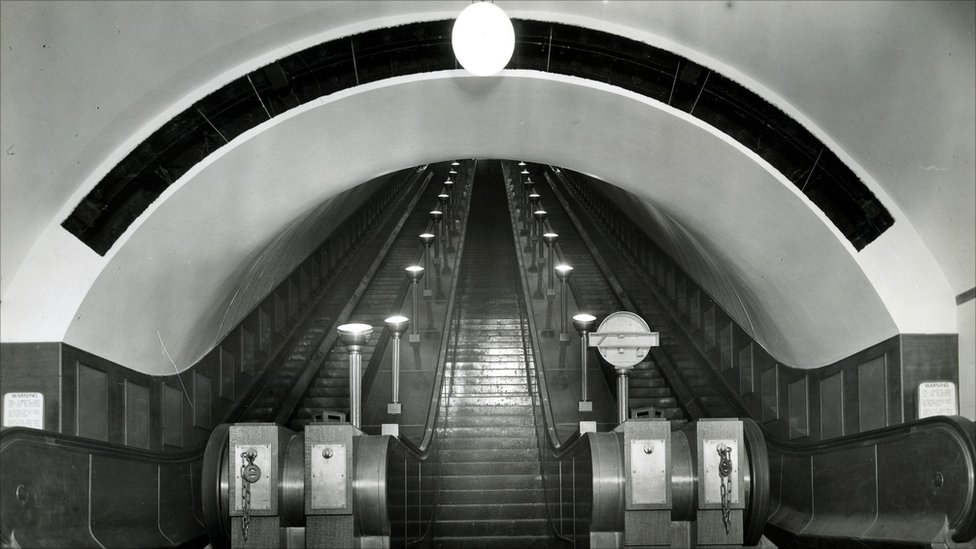
Many London Underground stations are rumoured to have their resident ghosts.
We must also acknowledge what got disturbed when the London Underground was built. Tunnels were carved through churchyards, crypts and burial grounds, and – according to London legend – plague pits. Aldgate Station is said to have been built directly in a plague pit, a mass grave mentioned by Daniel Defoe in his Journal of the Plague Year. Hauntings at Aldgate are so common that the station apparently keeps a ‘ghost log book’. The capital’s folklore claims the Piccadilly Line takes a swerve near Knightsbridge in order to avoid a plague pit and that the Bakerloo Line at Elephant and Castle stops just short of one of these repositories. When the Jubilee Line was extended in the 1990s, it disturbed a number of the graveyards of old monasteries and there have been sightings of medieval monks on this barely two-decade-old stretch of the network.
Out of all the creepy occurrences and macabre legends linked to the London Underground, I’ve selected seven supposedly haunted stations to investigate. So sit back for tales of ‘black nuns’ with a fondness for harassing banking establishments, screams that still echo from World-War-II air-raids, crypts converted into ticket offices, prehistoric elephants with axes in their heads, and attempts to explain why the Underground has acquired such a reputation for being a haven of spooks. Your dreary journey to work or your shopping jaunts around London might seem rather different after reading this.
Number 1: British Museum – A ‘Ghost’ Underground Station Haunted by an Ancient Egyptian Priestess
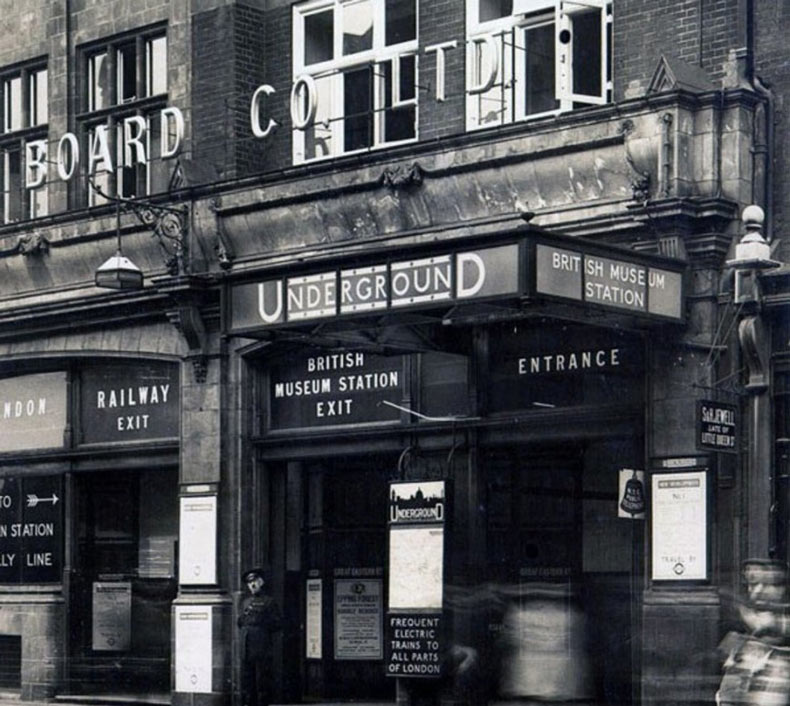
British Museum Underground Station – a disused Tube stop rumoured to be haunted by an Ancient Egyptian priestess
British Museum, once on the Central Line, is what is known as a ‘ghost station’. ‘Ghost stations’ are so named not, necessarily, because they’re home to a spook but because they’re closed to passengers, with changes to the network having made them obsolete. Used for maintenance or storage, or as occasional backdrops for films and music videos, these stations – with their archaic tiling and old-fashioned adverts and posters – may sometimes be glimpsed by travellers trundling by on nearby tracks.
Some ‘ghost stations’, however, really are rumoured to be haunted. British Museum – opened in 1900 to serve the nearby institution of the same name – closed in 1933, after the opening of the more conveniently situated and better-connected Holborn Station less than 100 metres away. During its brief career, however, British Museum Underground Station acquired a very peculiar ghost.
A secret tunnel is alleged to link the station and museum. Down this tunnel at night, the ghost of an Ancient Egyptian woman – a priestess in some accounts, a princess in others – was said to descend. Wearing a magnificent headdress and loin cloth, the woman would terrify staff and passengers with the most horrendous shrieks, shrieks that resounded along tracks and reverberated down corridors.
Named Amen-Ra, after the powerful Egyptian god she served, the woman’s mummy was said to reside in the British Museum. The ghost’s howls of anguish and rage were apparently triggered by the trauma of having her mummy ripped from its resting place and transported far overseas. Known as the ‘Unlucky Mummy’, Amen-Ra’s corpse became notorious for being cursed and the legend that grew up around it is as follows.
Excavated in Luxor in the 1880s, the 3,500-year-old mummy – in its richly decorated casket – was purchased by the Englishman Thomas Douglas Murray during a visit to Egypt in 1899. Murray packed up his new possession and shipped it to England, but it wasn’t long until Amen-Ra was making her displeasure clear. Murray soon suffered a shooting accident, meaning his arm had to be amputated and two of his servants who had handled the mummy died. Murray followed Amen-Ra back to England, where the ill-luck continued. A journalist borrowed the casket and soon her mother died, her engagement broke up and her dogs went mad. She quickly returned the casket to Murray.
Murray, now eager to offload the mummy, gave it to a friend, who suffered a series of misfortunes then died. Before his death, Murray’s friend – probably also keen to ditch the coffin – gave it to his sister who, as well as enduring an inevitable string of bad luck, took the mummy to be photographed. While developing his pictures, the photographer – who, of course, soon passed away – was horrified to see the face of ‘a living Egyptian woman’ superimposed on the casket ‘whose eyes stared furiously with an expression of singular malevolence’. When a person who purchased one of these photos brought it into his home, every piece of glass in the house shattered. Murray, alarmed and depressed by this constant stream of calamities, urged his friend’s sister to get rid of the mummy. She donated it to the British Museum, which exhibited Amen-Ra alongside other Egyptian artefacts.
The mummy didn’t, however, lose her troublesome reputation. The carrier who’d delivered her to the museum died and some visitors who sketched or photographed the mummy died too, with one individual shooting himself. Staff reported sobs and hammering noises coming from the casket, which only diminished – but did not stop – when they moved the mummy to her own, more prestigious display case.
Not content with creating disturbances in the museum, Amen-Ra also began haunting the nearby London Underground station. Shortly before the station closed, two British newspapers promised a cash reward to anybody brave enough to spend a night alone there. No one took up the offer.
Some assert the legend of Amen-Ra’s haunting was sparked by a film called Bulldog Jack. In this comedy thriller, a secret passageway leads from a Tube station to the British Museum, where it emerges in an Egyptian sarcophagus. But rather than the film inspiring the legend, it seems the legend influenced the film. Bulldog Jack wasn’t released until 1935 while British Museum Underground Station closed on 25th September 1933. It’s possible, however, that the film helped spread the stories of the station’s ghost. And the film itself would be – in an outlandish way – incorporated into Amen-Ra’s myth.
On the night Bulldog Jack premiered, two women are said to have vanished while walking through the tunnels of Holborn Station. Screams and moans were heard at the time of their disappearance as well as at several times during the following days and sightings were reported of the headdress-wearing priestess. Strange scratch marks appeared on the walls – of the abandoned British Museum Station say some, of Holborn say others. The women were never seen again. To this day, it’s said that at Holborn you can occasionally hear shrieks and wails echoing down the tunnels from British Museum Station.
The legend of the haunting of British Museum Station is likely to have been generated by the publicity surrounding the ‘Unlucky Mummy’, of which there was a lot at the time. But a sober examination of the facts makes this story seem less spectacular. The actual mummy of ‘Amen-Ra’ was probably never even brought to England – what was instead transported and what ended up in the museum was just the mummy case. While the case is likely to have once enclosed the mummy of a high-status person, there’s no evidence it belonged to a priestess or princess or anyone called Amen-Ra.
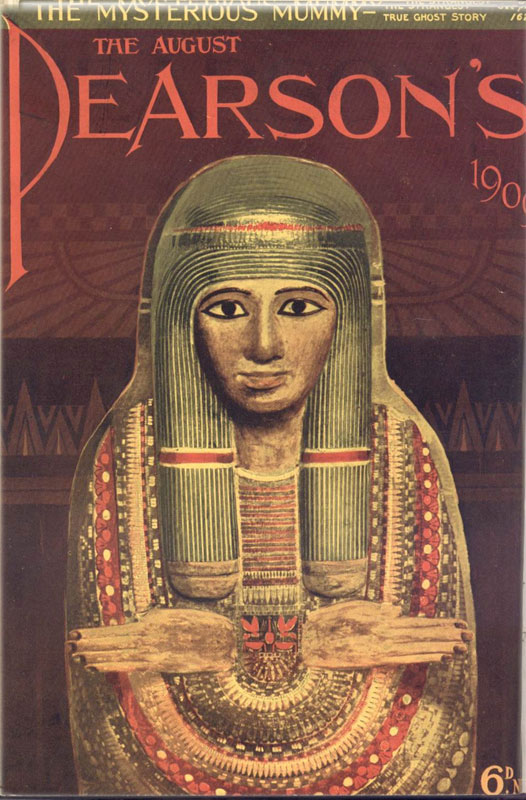
The Unlucky Mummy, on the cover of Pearson’s Magazine, 1909. The magazine is presenting the tale of the mummy as a ‘true ghost story’.
The idea ‘Amen-Ra’ was a ‘soul in torment’ likely came from Murray himself, when he – along with his friend the journalist WT Stead – noted how sad the face carved on the casket looked. Stead – who, like Murray, was obsessed with spiritualism and the occult – seems to have put the first articles about the mummy into print, articles that other newspapers soon elaborated on, igniting media hysteria and probably helping create the spin-off legend about the Underground station’s haunting.
As for the tale of women disappearing on the day Bulldog Jack premiered, no newspapers around that time make any mention of such an incident. But if you ever were to hear shrieks in Holborn Station late at night, it might be best to hop on the first train you could, without waiting to find out whether those wails were supernatural.
Number 2: Bank Underground Station – Crypts, Plague Pits and the Black Nun’s Ghost
Situated in the epicentre of London’s financial district, Bank is one of the oldest and busiest stations on the Underground. It’s also a station with a spooky history. London legend claims a part of it was constructed on the site of a plague pit. What we do know is that its Northern Line ticket hall was once the crypt of the adjacent St Mary Woolnoth’s Church. The dead – thought to number between seven- and eight-thousand – were cleared out when the station was built in 1900, with some being sent to South London’s Nunhead Cemetery. One of the doorways leading down to the ticket hall was the crypt’s entrance. In January 1941, tragedy smote the station when it sustained a direct hit from a German bomb. The station was being used as an air-raid shelter and 56 people were killed.
Perhaps this heritage of destruction and death has lead numerous passengers and staff members to remark on the feelings of hopelessness, sadness and concern that seem to permeate the station. Then again, such sentiments could be influenced by the fact the trains running into Bank shuttle so many commuters to gruelling days at work – Bank is frequently rated as the worst station on the London Underground in passenger surveys! Passengers and staff have also noted putrid, unexplained smells wafting through the station – might these ‘ghostly pongs’ recall the long-vanished plague pit and burial vault? (Stenches seeping from Mary Woolnoth’s overcrowded crypt were notorious for fouling the air inside the church.) Staff working late at night have reported odd banging sounds coming from lifts known to be empty and doors mysteriously slamming in the crypt-come-ticket-hall.
The most infamous ghost connected with Bank Underground Station is that of Sarah Whitehead, otherwise known as the Old Lady of Threadneedle Street or the Black Nun. The legend goes that Sarah’s brother Phillip – a clerk at the nearby Bank of England – was fond of living a luxurious life. Surrounded by wealthy bankers and City traders, Phillip didn’t see why his modest clerk’s salary should prevent him from enjoying a similar lifestyle to his peers so he borrowed money, getting into debt. Phillip’s beloved but naive younger sister Sarah, oblivious to his growing financial problems, eagerly participated in the high life along with him, eating fine food and quaffing quality wines. Phillip, however, knew something had to change if they were to go on with the habits to which they’d become accustomed.
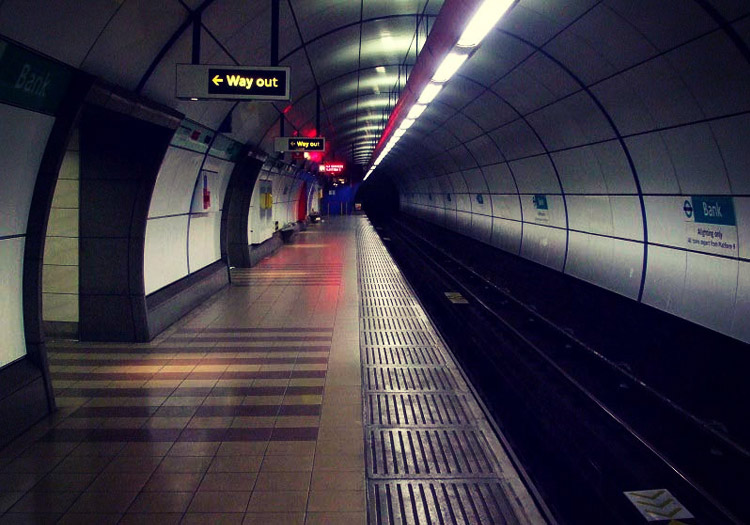
The spooky tunnels of Bank Underground Station are said to be haunted by the ghost of the ‘Black Nun’. (Photo: The Occult Museum)
Phillip had a go at investing in the stock market, but merely lost money. He next tried gambling, which made him spiral into even more desperate debts. He was driven into such anxiety that one day he listened to a friend who suggested he should forge a cheque at his workplace. Whitehead did so, managing to steal £87 (around £3,000 in modern money). Phillip was, however, soon found out and sent to the notorious Newgate Prison to await trial.
Phillip sheltered his sensitive sister from all this, arranging for her to stay with friends who lived off Fleet Street. This was so, if he was found guilty, she wouldn’t hear the bells of St Sepulchre’s Church tolling as he was led out of Newgate to face his execution. Phillip was indeed sentenced to death (though the records of the Old Bailey list him as Paul rather than Phillip Whitehead) and he was executed in 1812, aged 36.
After Sarah returned home, she – quite naturally – wondered where her brother was and started going to his former place of employment to enquire after him. She’d ask his fellow clerks, ‘Have you seen my brother today?’, to which they’d reply, ‘Not today, Madam’ before assuring her he was absent but well.
One day, however, a tactless clerk blurted out all that had happened, informing Sarah that her brother had been rightly executed. This enormous and dreadful shock made Sarah lose her reason. She began dressing in black and – unable to process the fact of Phillip’s death – continued to visit the bank every day. She’d still ask the clerks if they’d seen her adored brother, to which the clerks – out of pity – would answer, ‘Not today.’ Sarah would chat with them for a while before saying, ‘Give my love to him when he returns. I will call tomorrow.’
Some say the authorities at the bank first tried to treat her kindly. She was given food and small sums of money and was sometimes even allowed to make use of a room. But the employees soon tired of her constant visits. As her mental condition further declined, they began to fear the unhinged, black-clad woman and her increasingly aggressive demands for cash. Some say she turned up at the bank every day until her death 25 years later; others claim the daily visits lasted an astonishing 40 years. As the years passed, the macabre figure acquired nicknames – the Black Nun, the Bank Nun and the Old Lady of Threadneedle Street. The Old Lady of Threadneedle Street is a colloquial name for the Bank of England itself – a name it may have acquired from its darkly clothed visitor.
Sarah, who was 19 at the time of Phillip’s execution, is thought to have passed away at some point between 1837 and 1842, making her between 44 and 49 at the time of her death. Shock, grief and her strange lifestyle may have aged her prematurely though some claim she lived until the age of 60. She is said to have been buried very close to the Bank of England – but it seems that even death couldn’t break Sarah’s habit of haunting her brother’s workplace.
There have been sightings of Sarah’s ghost in and around the Bank of England and also in and around Bank Underground Station. The ghost – apparently – approaches pedestrians on the street, asking if they’ve seen her brother. Some of those approached – including groups of American tourists – had never before heard about her legend.
Some sightings have taken place within the Bank of England’s internal Court Garden. In the 1970s, two men saw a woman dressed in black walking hesitantly along the garden’s path before falling to her knees and striking the path’s stones while shaking her head before vanishing. Interestingly, the Church of St Christopher le Stocks was demolished to make way for an extension of the Bank of England and the path in the Court Garden is made up of the church’s tombstones. Some say Sarah was buried in the graveyard of Christopher le Stocks, but this would be impossible as the church was knocked down in 1782.
So if Sarah really was buried close to the bank, she could have been buried in the Church of St Mary Woolnoth. Some believe she was interred in the very vault which would become the station’s ticket office, meaning her corpse was one of those disturbed in the station’s construction. This might explain the legends of her ghost being glimpsed within the Underground station itself.
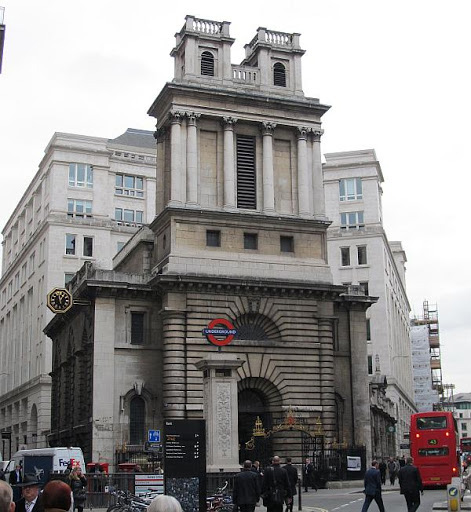
Nicholas Hawksmoor’s St Mary Woolnoth’s Church – its putrid, overcrowded crypt was transformed into Bank Underground Station’s ticket hall. (Photo: speel.me)
A commuter in 2001 travelling into Bank is said to have spotted Sarah. But, perhaps most spookily, a London Underground employee had a strange experience in the deserted station at about 2.00 am. The station was locked up and there should have been no members of the public inside. But, checking the CCTV monitors, the employee noticed ‘what appeared to be a little old lady standing in a long corridor’, close to a sharp turn – known as a ‘dogleg’ – leading to a staircase.
Puzzled, the man grabbed a portable radio and went to investigate. He claimed that as he approached the lady ‘she looked up straight at me, looked down again and turned and started walking away. I started running down the corridor in order to catch her. But by the time I’d got to the dogleg, she’d disappeared, which I immediately thought strange as I knew I’d covered that ground an awful lot quicker than she could have walked from the dogleg to the stairs.’
The man went up and down the staircase, checking it thoroughly, but found ‘both sets of gates were still closed and padlocked and she was nowhere to be seen.’ He radioed his colleague in the CCTV room and asked him to check the cameras to see where she could have disappeared to. The colleague ‘checked over a hundred cameras, but she was nowhere.’
Might he have encountered Threadneedle Street’s Black Nun?
Number 3: Covent Garden Underground Station – Haunted by the Ghost of a Victorian Actor
At Covent Garden Underground Station in 1972, a young lift operator – after the departure of the night’s final train – had ushered the last passengers from his elevator and was closing the station up. Believing all the passengers had gone, he was surprised to suddenly see a tall man in an old-fashioned waistcoat and top hat standing in the ticket hall. Flustered, the operator apologised for locking the man in the station and turned round to get his keys. When he turned back, however, the man had vanished. Assuming he’d gone down to the platforms – perhaps in the hope of catching a late train – the employee went down to look, but could find the man nowhere.
The operator later mentioned his strange experience to a colleague, who – somewhat resignedly – produced an old photograph and asked, ‘Did he look like him?’
‘That’s the spitting image of him!’ the operator said. ‘Where did you get that from?’
The colleague told the operator the photo was of the actor William Terriss, who’d been dead ‘for years and years.’ The 1972 sighting of Terriss was not the first at Covent Garden Underground Station – glimpses of the ghost, sometimes seen striding down the tunnels, had been reported since the 1950s. In 1955, a young ticket collector – who’d just closed up one cold November night – saw Terriss ascending the emergency staircase. Terriss – wearing an operatic-style cloak and gloves and clutching a cane – had ‘a very, very sad face and sunken cheeks.’
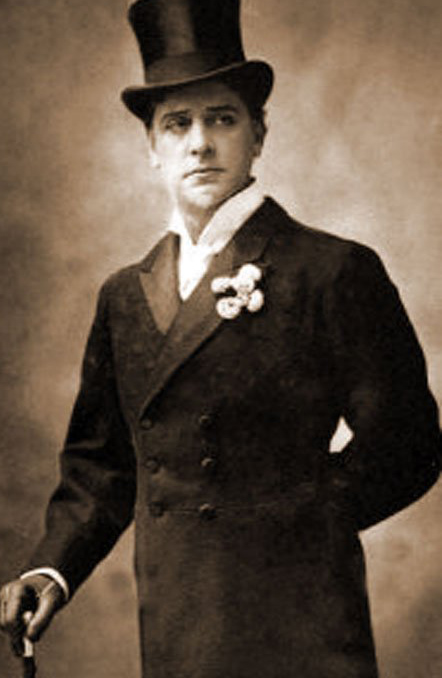
William Terriss, with his top hat, cane and gloves – his ghost has been glimpsed dressed in this way in Covent Garden Underground Station.
As in the 1972 incident, the ticket collector told the man the station was closed and asked him to wait while he unlocked the doors. But, when he returned after opening the gates, the cloaked figure was gone. Four days later, the ticket collector saw the man again, but when he tried to speak to him, he vanished. A few days after that, another young employee burst screaming into the station’s staffroom claiming he’d seen a ghost. The spectre he’d spotted matched Terriss’s appearance. For some time in the mid-1950s, Terriss was sighted at Covent Garden quite frequently and even gained a reputation for manifesting in the staff toilets. He so spooked some employees that they asked to be transferred elsewhere.
Born in 1847, William Terriss was a well-respected Shakespearean actor, who was also praised for his comedic and heroic roles. Known to fans as ‘Breezy Bill’, Terriss often performed at the Adelphi Theatre, in London’s West End, not far from Covent Garden. A dark spot in Terriss’s life, however, was the suffering one of his close friends, a fellow actor called Richard Archer Prince. Having for some time failed to get work, Prince was destitute. Under these tough circumstances, his alcoholism had become more severe and this – combined with his volcanic temper – had gained him the nickname ‘Mad Archer’. Terriss tried to help Prince out by giving him money and recommending him for roles, but Prince couldn’t overcome his problems and he grew increasingly envious of his happier, more successful friend.
On 16th December 1897, Prince waited for Terriss outside the Adelphi’s stage door on Maiden Lane. Prince was concealing a knife and – when Terriss arrived for that night’s performance – Prince launched a frenzied attack, repeatedly stabbing him in front of both passers-by and Terriss’s lover and leading lady Jessie Millward. Legend states that – as Terriss lay dying in Millward’s arms – his last words were ‘I will be back.’ Prince was later found guilty of Terriss’s murder, but – as he was also judged insane – he wasn’t executed but instead was sent to the Broadmoor Criminal Lunatic Asylum. He died there in 1936.
Terriss seems to have stuck to his final vow. In the 1920s, reports began of his ghost haunting the Adelphi Theatre. In 1928, a young actress was taking a nap in a dressing room prior to a performance. Her bed began to shake and she woke to find herself surrounded by a strange green mist. Unseen hands grabbed at her, hands that would leave bruises on her arms. Two mysterious knocks on the door brought the experience to an end. The dressing room had often been used by Terriss’s lover Jessie Millward and the door led out onto Maiden Lane. Apparently, when Millward was in the dressing room, Terriss would pass by and knock on the door twice to let her know he’d arrived.
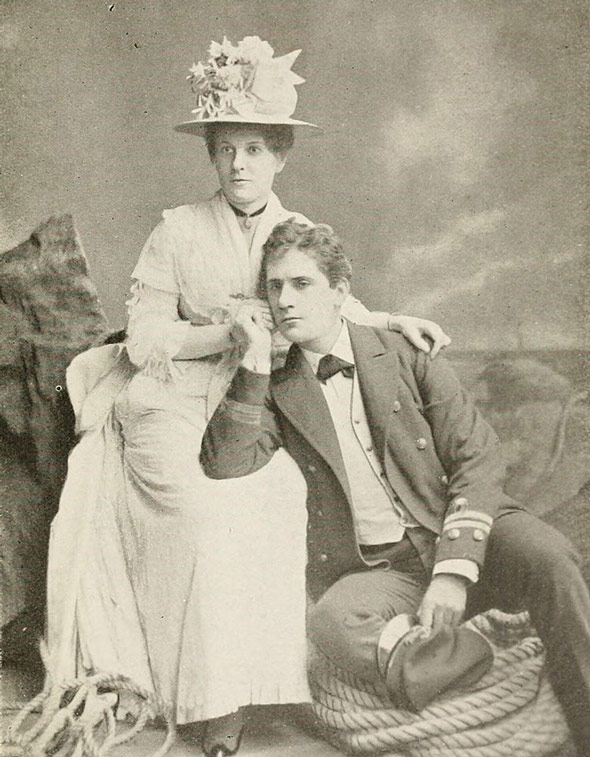
William Terriss, the murdered actor reputed to haunt Covent Garden Tube Station, with his lover and leading lady Jessie Millward
Other performers at the Adelphi claim to have heard unexplained voices and to have seen the ghost of William Terriss walking around the building, dressed in theatrical costume and sometimes brandishing a cane. The last sighting of Terriss at the Adelphi was in 1950, when he supposedly manifested in front of several witnesses.
Thereafter, Terriss seems to have switched to haunting Covent Garden Underground Station. This might seem a puzzling venue for a thespian ghost, but there was once a bakery on the site that was knocked down to make way for the Tube stop. The bakery was frequented by William Terriss.
The 1972 sighting of Terriss at Covent Garden is the last reported occasion of anyone seeing his ghost. Some have speculated the spook may have disappeared thanks to the station becoming busier as Covent Garden morphed from an area of markets into a popular district for entertainment and nightlife. Others, more sceptically, believe its because people have simply forgotten about Terriss. Or perhaps the ghost just became tired of his hauntings and concluded it was time for his final curtain call.
Number 4: Kings Cross St Pancras Underground Station – A Disaster Victim and the Ghost of a Celtic Queen
The labyrinthine mass of tunnels that tie together the two mainline stations of Kings Cross and St Pancras have a dark and tragic history. On 18th November 1987, a small blaze, which began at around 7.30 pm beneath an escalator, exploded into a massive fireball, creating an inferno that burned until the early hours of the next morning. 31 people lost their lives and 100 had to be taken to hospital. Hundreds more, trapped deep in the flaming station, managed to escape on still-running Tube trains.
This catastrophe might explain an apparition seen by some passengers in one of the tunnels leading into the Underground station. A woman – aged about 25 – dressed in jeans and 1980s-style clothing, has been spotted with her arms outstretched, sobbing uncontrollably. During the first reported encounter with her, in 1998, as passer-by stopped to ask the woman if she was all right. The passer-by was startled when another passenger walked through the woman as if she wasn’t there. The young woman then disappeared, but several passengers have seen her since.
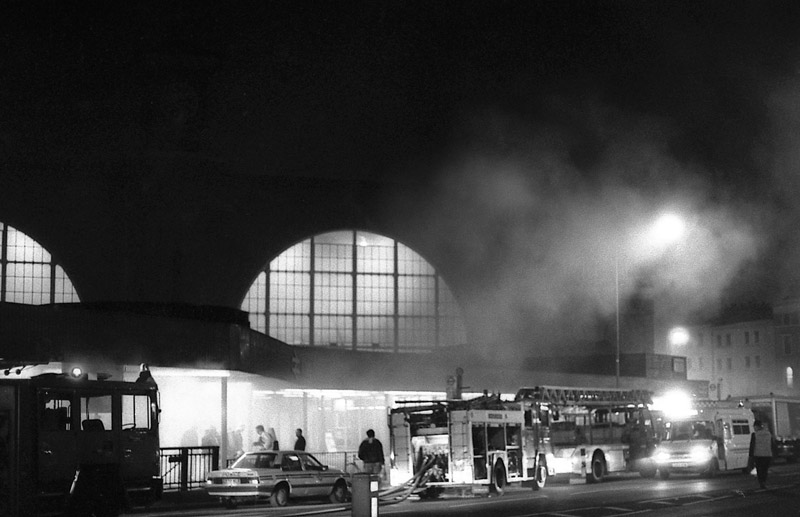
Fire rips through Kings Cross Underground Station in 1987. The Tube station is reputedly haunted by the ghost of a victim of the disaster. (Photo: Christopher Newberry)
A far more bizarre ghostly legend associated with Kings Cross suggests that the Celtic Queen Boudicca – who led a ferocious rebellion against Roman rule around 60 AD – is buried under one of the platforms of the mainline station. Some say her grave lies beneath platform 8, others that platforms 9 or 10 were built over her resting place. Boudicca’s ghost is rumoured to roam the tunnels of the Underground station directly below her tomb.
Boudicca destroyed St Albans and Colchester – as well as the vital settlement of Londinium – in a horror show of flames, slaughter and rampaging chariots before the Romans eventually defeated her. Even today, a red layer of oxidised iron and burnt clay can be seen in London’s soil, evidence of Boudicca’s fiery devastation. But why is this British rebel reputed to be interred beneath Kings Cross?
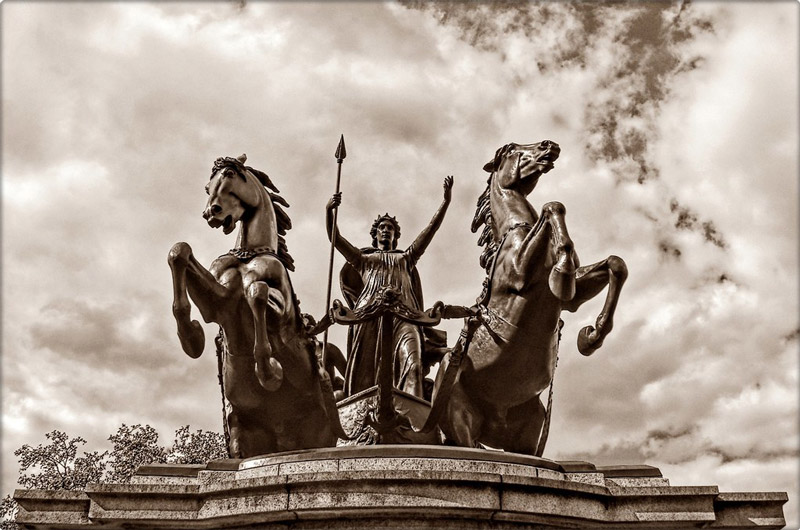
The statue of Boudicca (also known as Boadicea) near the Houses of Parliament. Boudicca is the only person to have destroyed London then had a statue raised to her in the city.
The connection of Boudicca with the area where Kings Cross Station would later be built began with the notion – quickly embraced by excitable early historians and enthusiastic locals – that the queen’s last battle had occurred there. The discovery of the remains of an elephant with an axe embedded in its skull in a gravel pit at the top of Grays Inn Road led to the assumption that the Romans had brought over the elephant and that a Celtic warrior had wedged the weapon in its cranium. Might, people reasoned, this soldier have fought in Boudicca’s army? Other ‘evidence’ in the vicinity suggested this might be the case. A structure spanning the River Fleet bore the name Battle Bridge while the remnants of Barnsbury Manor in nearby Islington were believed to be the remains of a Roman military camp and even marked as such on maps.
Modern research has debunked these romantic theories. The elephant and axe date from the Neolithic era, well before Boudicca’s time, while the remains of Barnsbury Manor are from the Middle Ages, long after her revolt. Battle Bridge only acquired its name in the mid-1600s – its new title probably a corruption of an earlier name like ‘Batford’ or ‘Bradford Bridge’. Even today, historians cannot say with any accuracy where Boudicca made her final stand.
Boudicca’s last battle was swiftly followed by her death – she’s said to have swallowed poison after losing it. But though erroneous reasonings have long placed the battlefield close to Kings Cross, the area doesn’t seem to have been considered as a location for her grave until quite recently, with more impressive sites like Stonehenge or a barrow high on Hampstead’s Parliament Hill being seen as more suitable for this honour.
The notion that Boudicca lies beneath Kings Cross Station doesn’t appear to have emerged until the Second World War. The whole thing may have started as a joke, with platform 10 perhaps suggested because trains for Cambridge left from there, Cambridge being (reasonably) close to the East Anglican homeland of Boudicca’s Iceni tribe. The idea, however, soon caught on with the populace, who perhaps seized on the concept of a British monarch (the name ‘Boudicca’ means ‘victory’) resisting a mighty military power from the Continent. An urban legend was, therefore, born and Boudicca’s ghost – presumably flying in her chariot down escalators and through tunnels, her famous yellow hair streaming out behind her – was added to London Underground’s strange collection of spooks.
Number 5: Farringdon Underground Station – Haunted by the Screaming Ghost of a Murdered Girl
Farringdon Underground Station – which lies just outside the boundaries of the ancient City of London – is rumoured to be haunted by a ‘screaming spectre’. Late at night, passengers and staff are sometimes alarmed by hideous and pitiful shrieks that sound like they might come from a young girl.
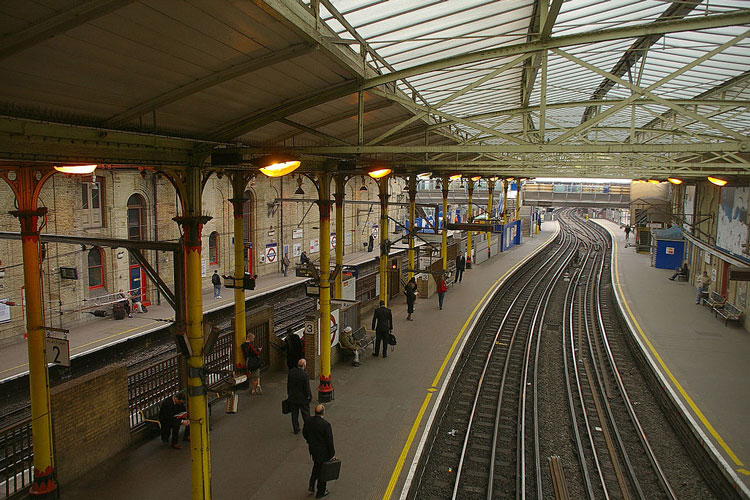
Do the platforms of Farringdon Tube Station resound to the screams of a ghost of a murdered girl? (Photo: mattbuck)
This ‘screaming spectre’ is thought to be the ghost of Anne Naylor. Anne lived in the Farringdon district before the station was built, then a poor and disreputable area full of criminals and gambling dens. 13-year-old Anne had been apprenticed to a mother and daughter who ran a hat-making business, but her mistresses were sadistic, subjecting their young charge to vicious beatings and sometimes starving her.
After one especially brutal assault, the mother and daughter were shocked to find that Anne had died. Panicking, they stowed Anne’s body in the attic, but as a gruesome smell soon suggested she’d started to decompose, they knew they couldn’t keep her there. They tried to dispose of Anne’s corpse by chopping it up and burning it on the fire, but abandoned this strategy when they realised the disgusting stench of burning flesh might alert their neighbours. In desperation, they threw what remained of Anne into an open sewer, which lay where Farringdon Station would later be constructed.
Anne’s remains were found, but – amazingly – the coroner, despite the fact Anne had been dismembered and burned, ruled she hadn’t been murdered. The case was soon forgotten and the hat makers would have got away with it, but one of them – several years later – blurted out what had happened and they were both hung.
The crime again faded from memory until Farringdon Underground Station was built and rumours began to circulate of Anne’s ghost. It’s said that if you stand on the platform at night, you can hear Anne Naylor’s shrieks echoing down the tracks.
Number 6: Bethnal Green Underground Station – Haunted by the Wails of Disaster Victims
During the Second World War, Bethnal Green Tube Station was – like many stations on the Underground – used as an air-raid shelter. When the sirens began to moan, the residents of the poor, overpopulated East End district would make their way down the station stairs, to sometimes spend whole nights shielded from the bombs falling above. The station housed an incredible 5,000 bunks and could host up to 7,000 people.
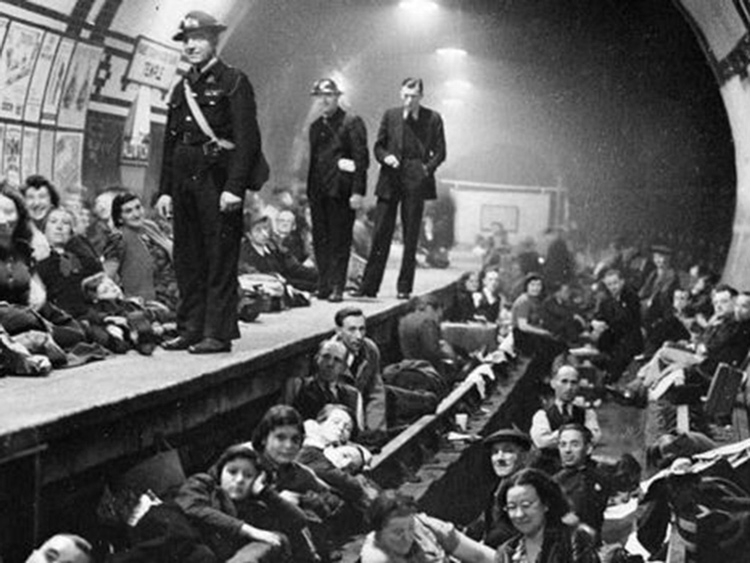
Londoners sheltering from an air-raid in a Tube station
On 3rd March 1943, however, death and calamity struck Bethnal Green, but not as a direct result of a German bomb. The sirens had sounded and hundreds of people were pouring into the Underground station, mainly the elderly, women and children as most younger men were away fighting. A woman carrying a baby and bundle of bedding stumbled and fell on the crowded, blacked-out staircase. A woman and child fell over her, knocking yet more people down, and soon the stairway was a scene of people tripping and tumbling on top of each other, with some becoming trapped in a tangled heap of bodies. Panic spread and people’s frantic struggles to get off the staircase made things even worse.
Nearly 300 people are thought to have fallen. 173 died from being crushed or asphyxiated and 60 others were taken to hospital. The government – fearing news of the disaster could be bad for morale – didn’t report the catastrophe for 36 hours, leading to accusations of a cover-up. When the incident was reported, it was announced the deaths had resulted from a direct hit by a bomb and a memorial plaque wasn’t put up until 50 years later.
No other incident during World War II resulted in a greater loss of British civilian life. The disaster also saw the largest number of deaths caused by any incident on the London Underground. Of those who perished, only 27 were men – the rest were women and children.
Unsurprisingly, this traumatic event has led many to believe Bethnal Green Underground Station is haunted. People have reported hearing the sounds of children crying and women screaming, especially late at night. In 1981, an employee was working the night shift alone at Bethnal Green. After all the passengers had left, he locked up the station and went to an office to do some paperwork.
He began to hear children crying. At first, he ignored the sound, but it got louder and louder and was soon augmented by what seemed to be women’s screams and people panicking. The noise went on for 10 or 15 minutes. Deeply alarmed, the employee ventured out into the ticket hall, where he could see no one.
The man said, ‘I was frightened to go back to the office because of the noise down there. It was quite frightening, actually. I still don’t want to go through Bethnal Green to this day; I can’t forget it, you know.’
Number 7: Aldwych – A ‘Ghost’ Underground Station Haunted by a Victorian Actress
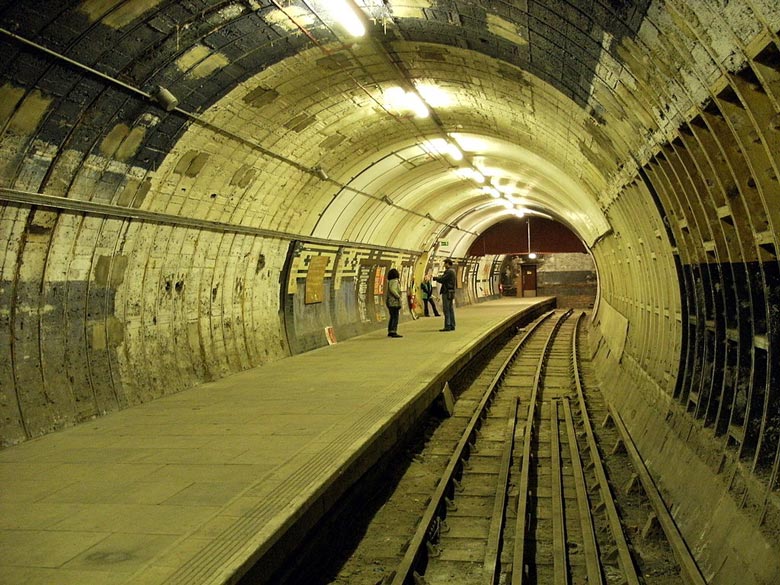
An abandoned platform at Aldwych, an allegedly haunted ‘ghost station’ on the London Underground (Photo: Pencefn)
William Terriss is not the only thespian ghost on the London Underground. Aldwych Station, in the West End’s theatreland, sat at the end of a spur branching off the Piccadilly Line, whose main function seems to have been to shuttle theatregoers to plays. Apart from this, the station was quiet. When its lifts were found to need expensive repairs in 1993, London Underground decided the cost wasn’t worth it. Aldwych closed the following year, joining the Tube’s ranks of around 40 ‘ghost stations’.
Aldwych can, however, boast its own theatrical phantom. Perhaps this is a result of the station having been built on the site of the Royal Strand Theatre. The ghost is that of a Victorian actress who – it’s said – thinks she has not yet enjoyed her final curtain call. Cleaners and maintenance workers have spotted her. Aldwych’s spooky tunnels have proved a popular location for shooting scenes for films and TV – members of film crews have seen shadowy fleeting figures and experienced unsettling sensations down there.
What Could Explain All the Legends of Ghosts on the London Underground?
The seven stations above are just some of those on the London Underground reputed to be haunted. Other examples of ghostly goings-on include the spirit of a young woman who boards the tubes at Elephant and Castle, the apparition of a man hanging onto the outside of a phantom train at South Kensington, and a faceless lady at Becontree, a spectre thought to be linked to a collision that killed 10 people in 1958. But why has this transport system generated so many stories of spooks?
Some ghosts of the London Underground largely originated from urban legends or press sensationalism – the malevolent mummy of British Museum, for example, or Boudicca at Kings Cross. Even the tales that have more of a foothold in reality contain inconsistencies. Could Sarah Whitehead, for instance, really have been completely shielded from news of her brother’s trial and wouldn’t she have become more suspicious after not seeing him for many days? Other London folklore is open to question, such as the idea of Underground stations being built in plague pits. The construction of the Tube undoubtedly disturbed crypts and churchyards and though it may have also disrupted plague pits, there are no actual records of this happening. Even Daniel Defoe’s famous plague pit in Aldgate cannot be said for sure to have been dug on the spot Aldgate Underground Station now occupies.
There’s also the sheer size and busyness of the London Underground. The network boasts 11 lines, 270 stations and 250 miles (400 kilometres) of track. In 2017-18, the network played host to 1.357 billion passenger journeys. Surely, just considering the laws of chance, a certain number of allegedly supernatural experiences would be likely to take place within such a vast system.
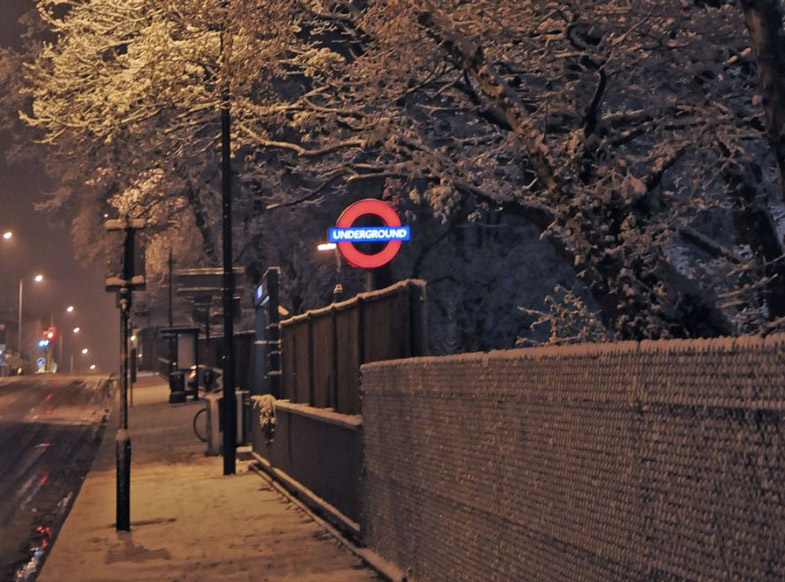
London’s sprawling Tube network has one of the world’s highest concentrations of alleged hauntings and ghost stories. (Photo: ShortList)
Tunnelling under an ancient city has also inevitably meant that the network has impinged on sites linked to bloodshed, disaster and the macabre, sites whose legends have added to the Underground’s gothic notoriety. Gallows, for instance, are said to have stood opposite Camden Town Tube Station while the station itself is rumoured to have been built over the home of an infamous witch named Mother Damnable. When Mother Damnable died, hundreds of people are reputed to have seen the Devil entering her cottage.
But, even considering its large dimensions and its habit of linking up sites connected with gruesome events, the London Underground does house more than its share of ghosts. How might we account for the strange sounds and apparitions that perfectly ordinary passengers and employees have witnessed on the Tube?
One theory concerns a phenomenon called infrasound. Infrasound refers to noises – measuring less than about 20 hertz – that are too low for humans to hear. Even though we can’t hear infrasound, large amounts of it can still affect us, putting us ‘on edge’ by triggering our ‘fight or flight mechanism’. Too much infrasound can make us feel cold, make us shiver, make the hair stand up on our necks, and even lead to us glimpsing shadowy objects and having more extreme reactions to unexpected noises. On the London Underground – because of the sounds made by trains, escalators and various machines – there can be exceptionally high infrasound levels.
Vic Tandy, a Senior Lecturer at Coventry University, tested out the infrasound theory for the 2005 Channel Five documentary Ghosts on the Underground. Using a low-frequency microphone to measure infrasound on a train on a section of track known as the Kennington Loop, Vic said, ‘If that was audible sound that would be a disco that would be just about as loud as you could possibly stand; you would come away from that with your ears ringing … that might be responsible for levels of unease that other events might be more likely to give a paranormal feel too.’
The Kennington Loop – a ring where Northern Line trains turn round – is notorious among drivers for generating spooky sensations. Though no passengers should be on trains when they go through the loop’s 160-year-old tunnels, drivers have reported hearing the connecting doors between carriages banging and other unexplained sounds. A man was apparently killed at Kennington Station while trying to board a train and dragged into the sidings.
Another eerie tunnel is Pages Walk, a service tunnel near Embankment Station that runs under the Thames. Underground staff who’ve ventured along it have reported feelings of great discomfort, as well as doors mysteriously banging, footstep-like noises, lights flickering off and on, and sudden drops in temperature (unexplained cold is widely seen as a sign spooks are near).
When Vic went down Pages Walk, he acknowledged the ‘whole atmosphere of this place is incredible’, noting ‘cold blasts of air’ and extreme temperature changes. He also noted a great deal of low-frequency sound and took temperature readings showing a drop of 10 degrees. He found the strange draughts – and the resulting banging doors – were caused by trains going by in adjacent tunnels. The temperature changes might have also been caused by the trains redistributing air currents.
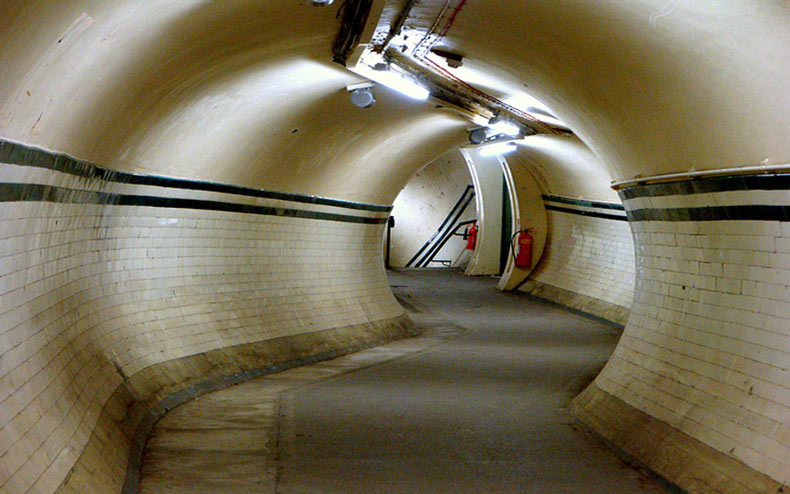
Might high infrasound levels be responsible for legends of ghosts on the London Underground? (Photo: boutiquehotelier)
At Bethnal Green, Vic found that infrasound levels were high in the office. He also electronically simulated a female scream coming from outside the station to see if the sound would behave in an odd way – and discovered it was possible for people to clearly hear sounds from outside within the ticket hall. Might the shrieks heard at Bethnal Green, Farringdon, British Museum and Holborn have been noises from outside: sounds that then echoed strangely through booking offices, along tunnels and down tracks – noises rendered especially creepy by high levels of infrasound?
Some spooky occurrences on the London Underground, however, are harder to explain. In 1984, a trainee manager was walking along a Northern Line tunnel at night to check it after the trains had stopped. Between Oval and Stockwell Stations, he met an older man working in an area called South Island Place, where the tunnel broadened out. What struck the trainee as strange was that – in contrast to his electric torch – the man was using an old-fashioned, paraffin-powered lantern known as a Tilly lamp.
He told the man he was surprised he had ‘one of those old lamps’ and the man replied he liked it better. After a quick chat, the trainee continued down the tunnel. Upon reaching Stockwell, he phoned a supervisor to tell him he’d walked the track and asked him what ‘the other guy was doing at South Island Place?’
‘What other guy?’ the supervisor asked with concern, insisting he’d booked no one in to work there that night.
The supervisor decided that – for safety reasons – they’d have to search the tunnel and he and the trainee walked in opposite directions along it, meeting in the middle without having seen anyone. The search meant the first early morning trains were delayed so the trainee’s manager called him in for a disciplinary meeting.
The trainee said, ‘He gave me a very old-fashioned look and said, “You know about South Island Place and the ghost stories, do you?” I said, “No”, but I was sure he didn’t believe me and he said there was a myth about some old guy who’d been hit by a train and killed donkey’s years ago. He thought I was winding him up.’
In the 1950s, a maintenance worker was killed on that part of the Northern Line. The driver of the train that hit him said the man had been holding a Tilly lamp.
(This article’s main image shows the London Underground in about 1900.)

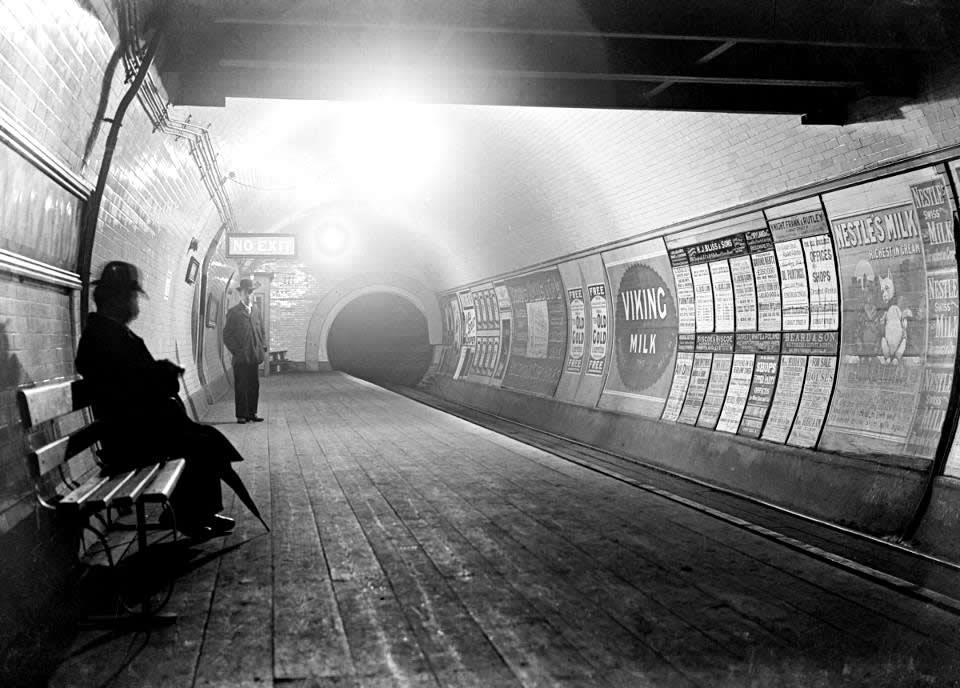
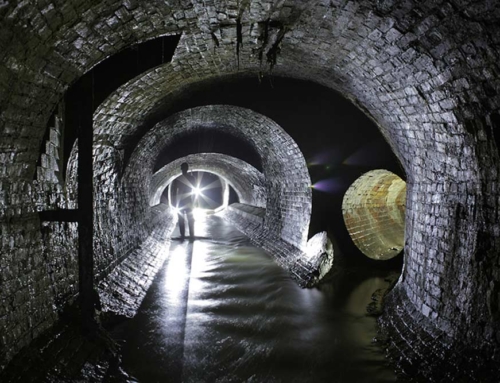
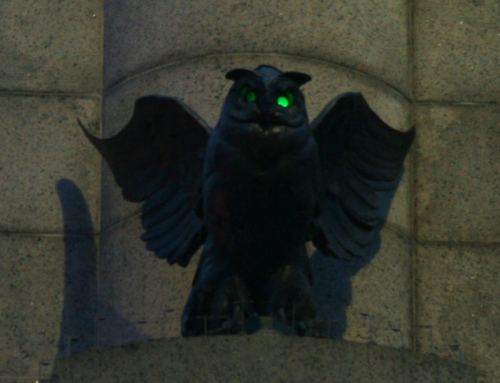
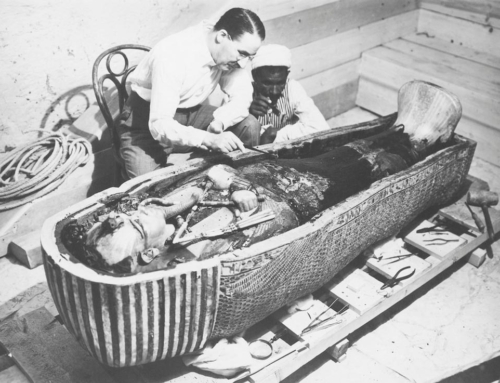
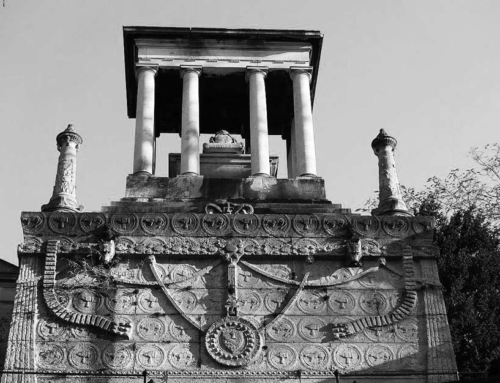
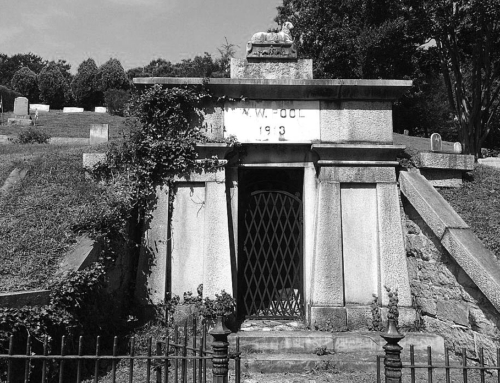
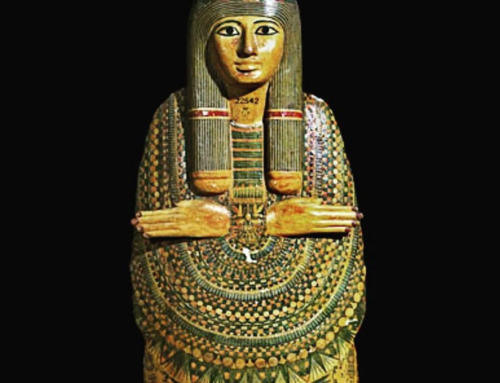
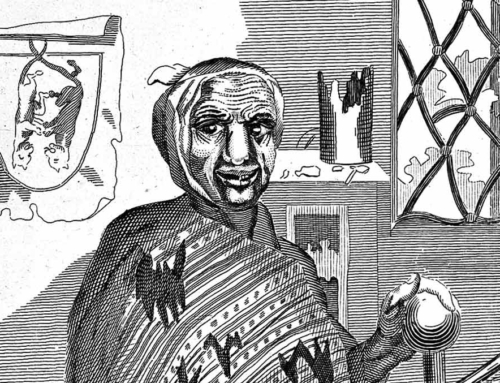
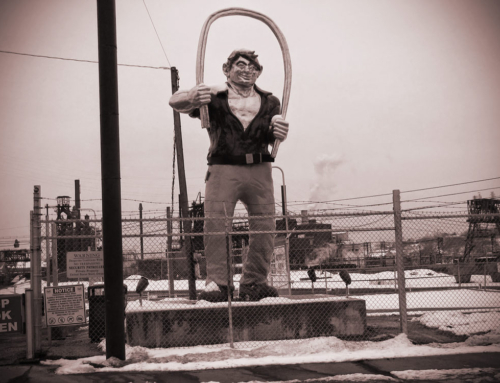
I’ve been watching a YouTube channel recently where these are covered. It’s fascinating.
There’s an excellent documentary on YouTube about hauntings on the Tube called ‘Ghosts on the Underground’: https://www.youtube.com/watch?v=3Bf_bxfE5gw
Thrilling stuff! I’ve always found underground stations rather unnerving
Thanks Sally, glad you enjoyed the eerie tales of ghosts on the London Underground!
Very interesting reading about the stories of ghosts.
I recall many years ago, when I was sat at my type writer, writing one of my first children stories.
I was sat writing when my dog pushed his nose to myside, wanting to go out.
I opened the door to let him out, on is return, he was covered in snow, I thought that’s odd, the weather forecast stated wind and rain.
I looked out side and it was windy and raining, so the forecast was right.
Has I step inside merlin the dog, was know were to be seen.
I thought that’s odd, he always sit with me when I’m writing in the early hours of the morning.
So I made my way, to the music room, just throw the arch way, and saw merlin sat with four Edwardian people.
Mother and father, young son and little sister. The first word the gentleman said was just passing down, my reply was lovely to meet you all, I must get on with this storie I’m writing. He Placed his hand to his hat a smiled, as the hours pass I occasionally looked to see how they were doing. As my candle shortened I new it was time to finish. I looked again and the passing people had moved on.
Great article David. Do you have any more details about the commuter who saw the Black Nun in 2001?
I’m afraid I don’t. Glad you enjoyed the article, Alex.
Great stuff I really enjoyed it. Can’t wait for more
Cheers, Jamie, glad you enjoyed my accounts of London Underground’s ghosts!